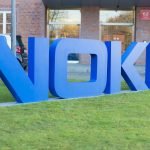
The script might have changed, but the leading actors remain. Gartner’s 2020 Magic Quadrant analysing the leading players in cloud infrastructure as a service (IaaS) has included various flavours of platform as a service (PaaS) in a nod to expanding enterprise use cases. Yet these additions have reinforced the status quo, rather than disrupted it.
Amazon Web Services (AWS) remains top of the rankings, with Microsoft and Google Cloud alongside in the leaders’ zone. This is a mirror of last year’s report and, indeed, the year before: Google joined the hallowed leader ranks for the first time in 2018. The only change from the 2019 ranking is the addition of Tencent Cloud, joining Alibaba Cloud, IBM and Oracle as the lowest-ranking niche player.
Gartner said that this Magic Quadrant ‘needed to evolve’ to reflect the ‘broad array of services’ hyperscale cloud providers offer beyond IaaS. This includes application and application developer PaaS, functions as a service (FaaS), as well as industrialised private clouds in enterprise data centres.
For such an entrenched leadership group, the cautions Gartner notes – of which there are always a few – are of most interest.
As far as AWS is concerned, its sheer size and complexity are potential red flags. Naturally, various companies exist to help soothe customers’ headaches and be middlemen, from consultancies to CASBs, yet Gartner describes it as ‘daunting’ to many enterprises. The snafus arising from disagreements with open source software providers, which this publication has covered extensively, are also noted.
For Microsoft, the primary concern is around a lower ratio of availability zones, while Google Cloud arguably suffers more than the other members of the ‘big three’ from the addition of PaaS. The preferred cloud partnership between SAP and Microsoft Azure is also seen as a significant enterprise indicator.
Ultimately, there are few surprises in the macro analysis, but the micro analysis makes for important reading. The Covid-19 pandemic has forced cloud infrastructure and services to the top of the agenda for many organisations if it wasn’t there already, as a recent report from KPMG outlined. Yet getting the right mix of services – hybrid cloud appears to be much more popular than multi-cloud right now – and ensuring security still requires hard work.
One of the main differentiators for the hyperscalers is artificial intelligence (AI). A separate Magic Quadrant, published earlier this year, saw AWS again at the top, albeit with Microsoft and Google not far behind.
You can read the full report from AWS’ landing page here (email required).
Photo by Giorgio Trovato on Unsplash

Interested in hearing industry leaders discuss subjects like this and sharing their experiences and use-cases? Attend the Cyber Security & Cloud Expo World Series with upcoming events in Silicon Valley, London and Amsterdam to learn more.






